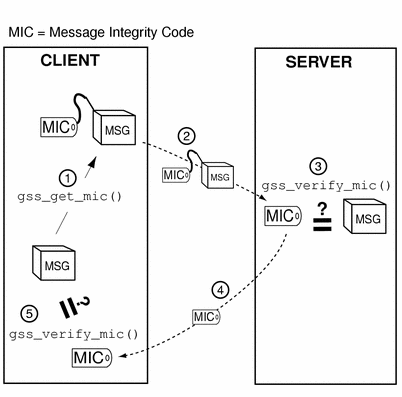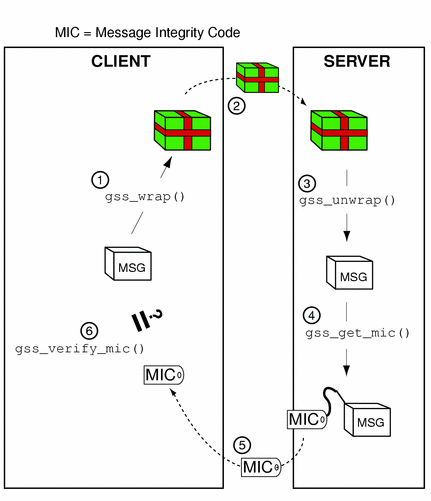Transmission Confirmation (Optional)
After the recipient has unwrapped or verified the transmitted message, it might want to send a confirmation to the sender. This means sending back a MIC for that message. Consider the case of a message that was not wrapped by the sender, but only tagged with a MIC with gss_get_mic(). The process, illustrated in Figure 1–14, is as follows:
-
The initiator tags the message with gss_get_mic().
-
The initiator sends the message and MIC to the acceptor.
-
The acceptor verifies the message with gss_verify_mic().
-
The acceptor sends the MIC back to the initiator.
-
The initiator verifies the received MIC against the original message with gss_verify_mic().
Figure 1–14 Confirming MIC'd Data

In the case of wrapped data, the gss_unwrap() function never produces a separate MIC, so the recipient must generate it from the received (and unwrapped) message. The process, illustrated in Figure 1–15, is as follows:
-
The initiator wraps the message with gss_wrap().
-
The initiator sends the wrapped message.
-
The acceptor unwraps the message with gss_unwrap().
-
The acceptor calls gss_get_mic() to produce a MIC for the unwrapped message.
-
The acceptor sends the derived MIC to the initiator.
-
The initiator compares the received MIC against the original message with gss_verify_mic().
Figure 1–15 Confirming Wrapped Data

- © 2010, Oracle Corporation and/or its affiliates
